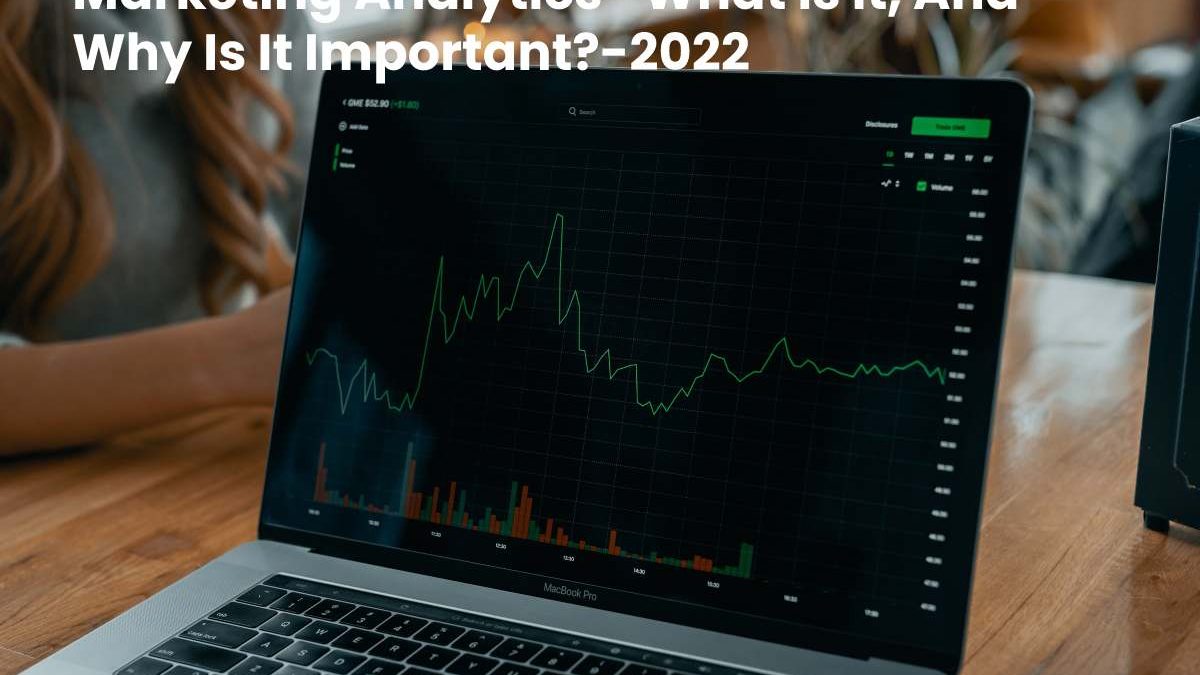Marketing analytics uses important business metrics such as Return on investment, marketing attribution, and overall marketing effectiveness. In other words, it tells you how your marketing programs are performing. Achieve by measuring performance.
Marketing analytics collects data from all marketing channels and consolidates it into a joint marketing view. From this standard view, you can extract analytical results that can provide invaluable help in driving your marketing efforts.
Table of Contents
Why Is Marketing Analytics Important?
Over the years, as companies expanded into new marketing categories, new technologies were adopted to support them. Because each new technology is typically implemented in isolation, the result was a jumble of disconnected data environments.
As a result, marketers often make decisions based on data from individual channels (website metrics, for example) without considering the entire marketing landscape. Social media data is not enough. Nor is web analytics data alone enough. And tools that focus on a single channel snapshot in time are woefully inadequate. In contrast, marketing analytics considers all marketing efforts across all channels over a given period – which is essential for making good decisions and executing effective and efficient programs.
What You Can Do With Marketing Analytics
With marketing analytics, you can answer questions like these:
- How are our marketing initiatives performing today? What can we do to improve them? How about the long term?
- How do our marketing activities compare to those of our competitors? Where do they invest their time and money? Do they use channels that we don’t use?
- What should we do next? Are our marketing resources adequately distributed? Are we allocating time and money to the proper channels? How should we prioritize our investments for the coming year?
Three Steps To Marketing Analytics Success
To reap the most significant rewards from marketing analytics, follow these three steps:
- Use a balanced variety of analytical techniques.
- Evaluate your analytical resources and fill in the gaps.
- Act on what you learn.
Use A Balanced Variety Of Analytical Techniques
To get the most benefit from marketing analytics, you need a balanced analytics variety – that is, one that combines techniques for:
- Generate past reports. Using marketing analytics to generate past information can answer questions like: Which campaign elements generated the most revenue last quarter? How did email campaign A perform compared to direct mail campaign B? How many leads did we generate with blog post C versus social media campaign D?
- Analysis of the present. Marketing analytics lets you determine how your marketing initiatives perform by answering questions like: How are our customers engaging with us? What channels do our most profitable customers prefer? Who talks about our brand on social media sites, and what do they say?
- Prediction or influence on the future. Marketing analytics can also generate data-driven predictions that you can use to influence the future by answering questions like: How can we turn short-term wins into loyalty and sustained relationships? How will adding ten sales reps in underperforming regions affect revenue? Which cities should we focus on next using our current portfolio?
Assess Your Analytical Resources And Fill In The Blanks
Marketing organizations have access to many different analytical resources to support various marketing goals, but you probably don’t have all your bases covered if you’re like most. Assessing your current analytics resources is an excellent next step. After all, it’s essential to know where you are along the analytical spectrum to identify the gaps and start developing a strategy to fill them.
For example, a marketing organization may collect online transaction and POS (point of sale) data, but what about all the unstructured information from social media sources or call centre records? ? These sources are a gold mine of information. Today the technology exists to turn unstructured data into real insights that marketers can use. As such, a marketing organization may choose to plan and budget for the addition of analytics resources that can fill that particular gap.
Take Action Based On What You Learned
Unless you act on it, there is absolutely no real value in all the information it can give you. In a constant process of testing and learning. It allows you to improve the overall performance of your marketing program, for example:
- Identifying deficiencies in the channels.
- Adjusting strategies and tactics as needed.
- Optimizing processes.
Without the ability to test and evaluate the success of your marketing programs, you would have no idea what works and what doesn’t, when or if things need to change, or how. Similarly, what’s the point if you use marketing analytics to measure success but do nothing with that insight?
Marketing analytics optimizes a it process, making it better and more successful after closing the loop related to your it efforts and investments. For example, marketing analytics can lead to better lead nurturing and management, leading to increased revenue and profitability. By managing leads more effectively and linking those leads to sales – known as closed-loop marketing analytics – you can see which specific it initiatives are helping to solidify your operating bases.
Also Read: CRM- What Is CRM, And What Is It For? Understand How It Works


